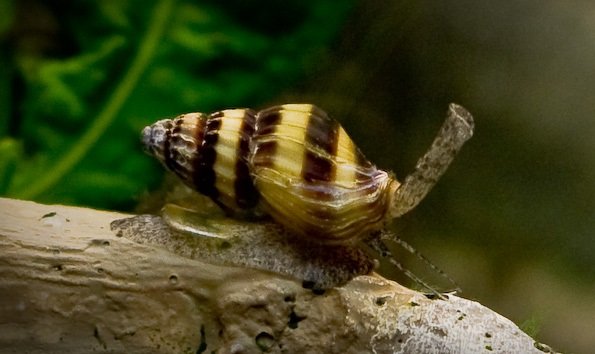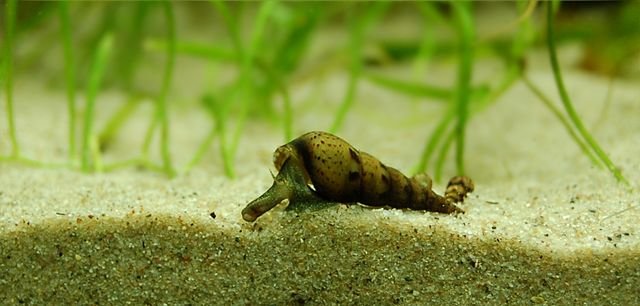San Diego, USA.- Abalone, large single-shelled mollusks, are an unusual sight these days off the coast of Washington, California, and Oregon. Of seven species of abalone on the west coast, two are endangered and three are considered species of concern. And one of the two species that is not considered threatened, the red abalone, saw a population crash last year that led fisheries managers to close the recreational fishery for 2018 in California.
Though the decline of abalone was in large part driven by overfishing, restoration efforts are complicated by environmental change and now, a deadly disease called withering syndrome. In a new study funded by California Sea Grant, researchers shed new light on withering syndrome in three species of abalone, the red, the pink, and the pinto.
The study shows that species adapted to colder waters may be more vulnerable to the illness, and that rising water temperatures lead to greater susceptibility. That means that as water temperatures increase, the disease could spread further north to northern California, Oregon, and Washington, affecting abalone farms that produce the shellfish for food as well as efforts to protect and restore native abalone species along the coast.
Wasting away
“Withering syndrome was first noticed in 1985, in the Channel Islands off of Southern California. Since then, it has spread both north and south along the coast, south into Mexico and as far north as Sonoma County,” says University of Washington researcher Carolyn Friedman. The syndrome led to catastrophic die-offs of the now endangered wild black and cultured white abalone populations, and has been observed in other species such as the pink and red abalone.
“The initial clinical signs that one can observe are general and include weight loss and anorexia. A farmer might notice that the abalone are not eating as much and have become anorexic. Normally the body and foot of an abalone fill the entire volume of shell. When they are infected, you can see the mantle retracting from the edge of the shell,” says Friedman. Once these signs of disease appear, the disease is incurable. The infected abalone die within one to three months. “Just wasting-withering-away,” says Friedman.
The cause of the disease has been identified-a bacterium related to the one that causes typhus in humans-but it wasn’t clear why some species seemed to be more vulnerable than others. Also unknown was whether species currently outside of the epidemic’s range could also be infected.
Stay Always Informed
Join our communities to instantly receive the most important news, reports, and analysis from the aquaculture industry.
In the new study, Friedman and a graduate student, University of Washington Ph.D. candidate Lisa Crosson, infected three species of abalone that range from California to Washington with the bacterium that causes withering syndrome, and exposed them to a range of water temperatures.
They found that the pinto abalone, native to the chilly waters of Washington State and Canada, was the most vulnerable to withering syndrome, become infected and died at a water temperature of 17° Celsius (63° Fahrenheit). The red abalone, native to northern and central California, grew ill at 18° C (64° F), while the pink abalone, native to southern California, was the least vulnerable, and required a water temperature of 19°C (66° F) before succumbing.
“This was the first infection study with pinto abalone, where weve demonstrated that they’re highly susceptible to infection, and have extremely low resistance to withering syndrome. The pinto [abalone] were the only species in experiment that experienced 100% mortality, while red and pink had less than 30% [mortality],” says Crosson.
Friedman and Crosson also found that genetics may play a role-when they compared genetic markers from the three species with the white abalone (extremely vulnerable to the disease), they found a link between vulnerability and genetic relatedness to the white abalone.
The research also serves as a warning of how climate change could impact already vulnerable species, and could prove useful for restoration efforts, along with forecasts of ocean temperature change.
“Marine animals do suffer from infectious disease, and temperature is a very important trigger. So if we can reduce ocean warming, we can reduce impacts that people may not even realize can happen,” says Friedman.
Reference (open):
Lisa M. Crosson and Carolyn S. Friedman. Withering syndrome susceptibility of northeastern Pacific abalones: A complex relationship with phylogeny and thermal experience. Journal of Invertebrate Pathology, Volume 151, January 2018, Pages 91-101. https://doi.org/10.1016/j.jip.2017.11.005
https://www.sciencedirect.com/science/article/pii/S0022201117302628
Source: University of California – San Diego
Editor at the digital magazine AquaHoy. He holds a degree in Aquaculture Biology from the National University of Santa (UNS) and a Master’s degree in Science and Innovation Management from the Polytechnic University of Valencia, with postgraduate diplomas in Business Innovation and Innovation Management. He possesses extensive experience in the aquaculture and fisheries sector, having led the Fisheries Innovation Unit of the National Program for Innovation in Fisheries and Aquaculture (PNIPA). He has served as a senior consultant in technology watch, an innovation project formulator and advisor, and a lecturer at UNS. He is a member of the Peruvian College of Biologists and was recognized by the World Aquaculture Society (WAS) in 2016 for his contribution to aquaculture.




